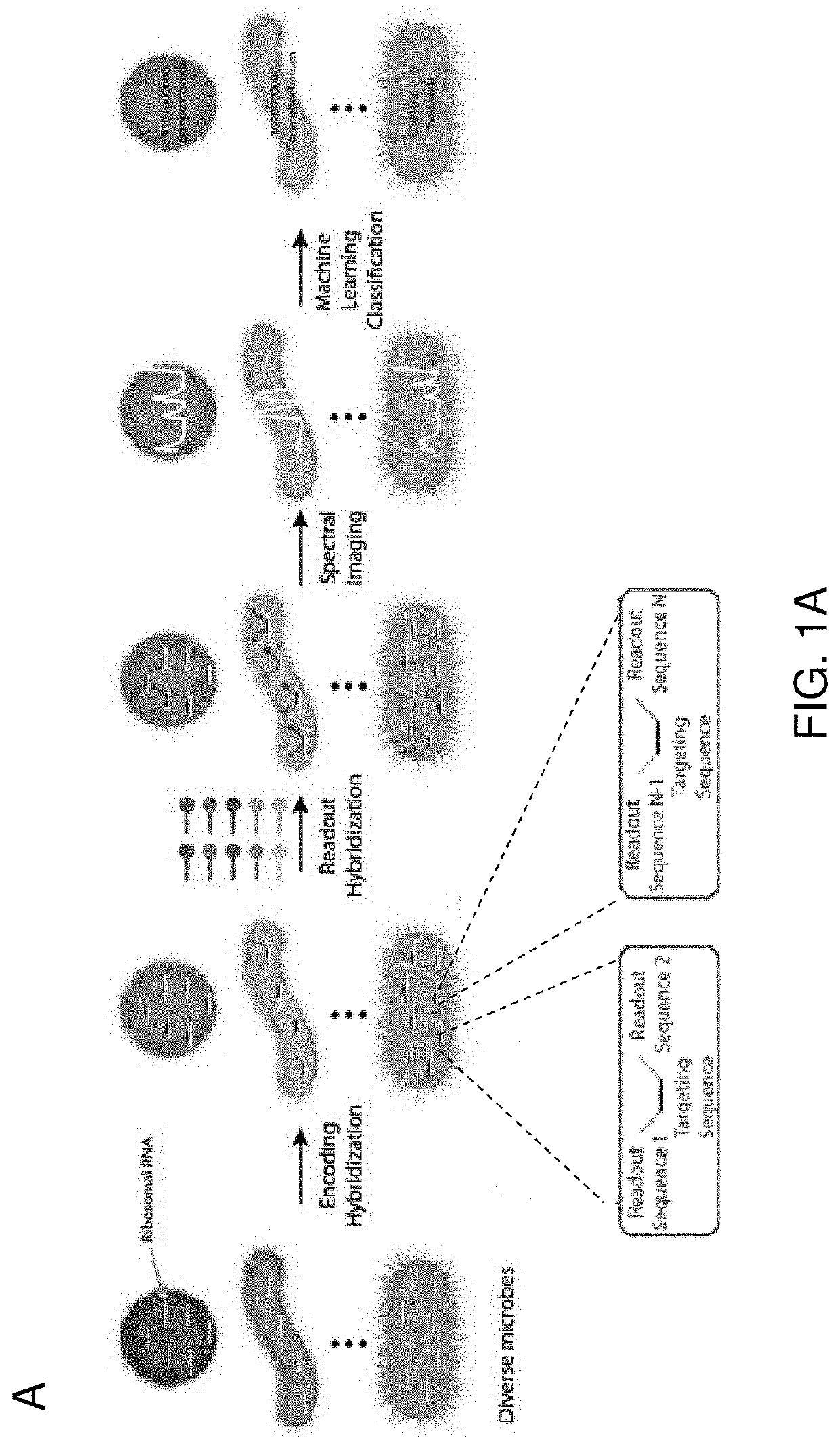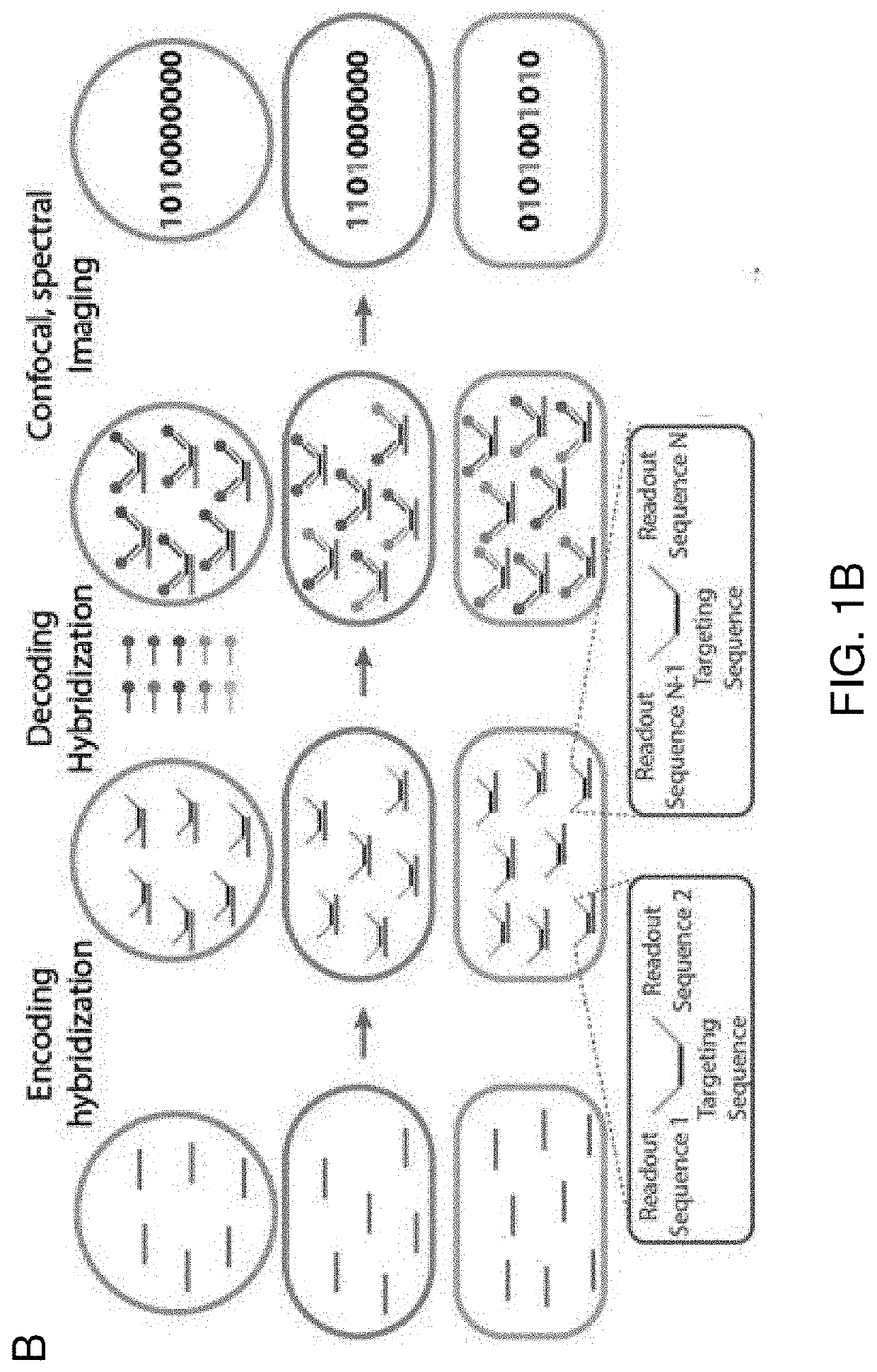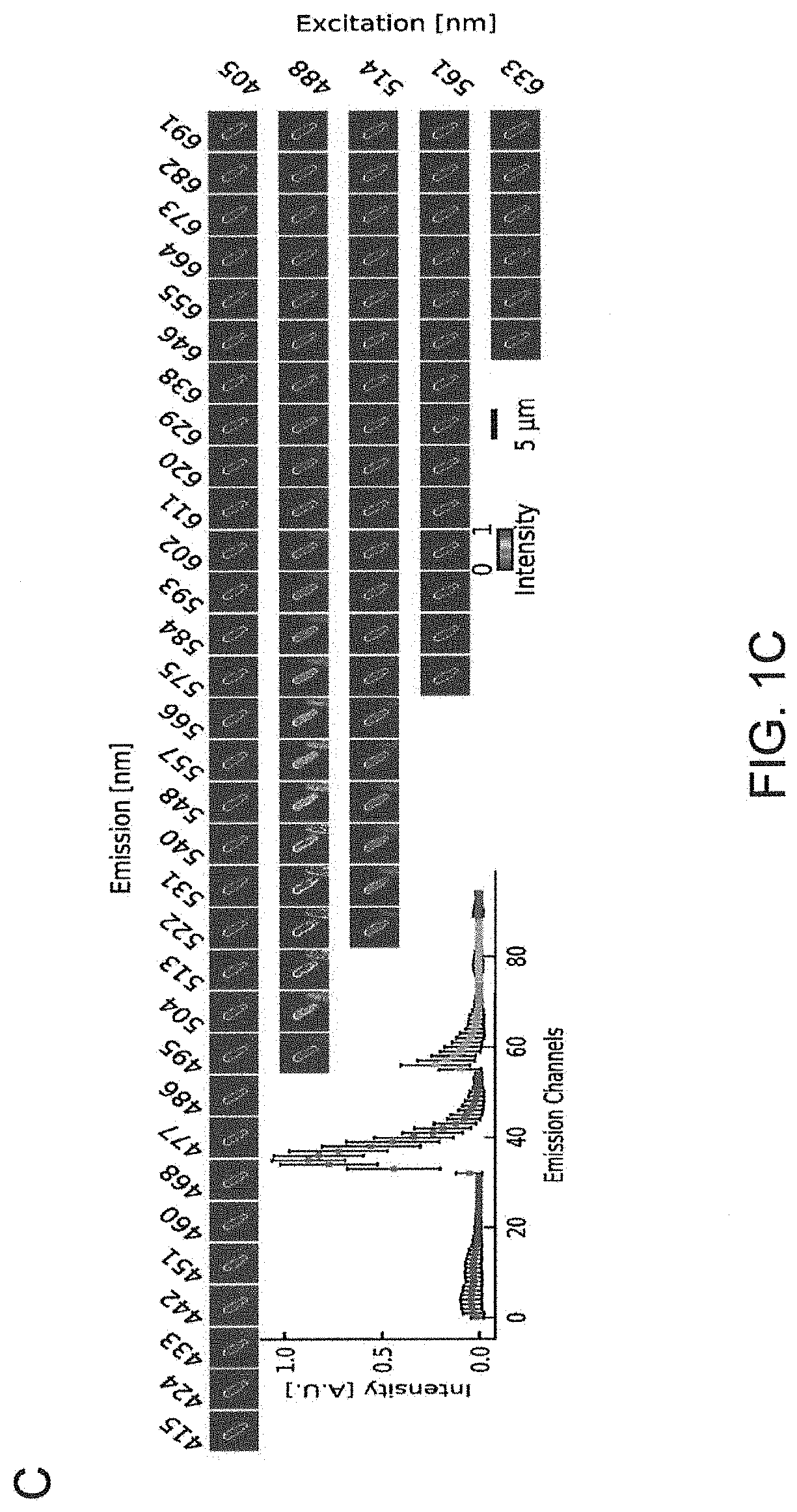Highly multiplexed phylogenetic imaging of microbial communities
a phylogenetic imaging and microbial community technology, applied in the field of high-multiplication phylogenetic imaging of microbial communities, can solve the problems of limited significant multiplexity limitations, and limitations in the number of taxa that can be probed in a single experimen
- Summary
- Abstract
- Description
- Claims
- Application Information
AI Technical Summary
Benefits of technology
Problems solved by technology
Method used
Image
Examples
example 1
and Methods
Cell Culture
[0103]All cultured cells were inoculated from frozen stock stored at −80° C. into 4 mL of appropriate growth medium. A loopful of the liquid culture was streaked on an appropriate agar plate. A single colony from the agar plate was finally inoculated into appropriate liquid medium and grown to roughly mid-exponential phase. Details of growth media and growth time is listed in Table 1.
TABLE 1Information for species used in the synthetic community experiment.SpeciesGramMed.Temp.1st liq. Gr.Plate2nd liq. Gr.Escherichia coli MG1655−LB37° C.O / NO / N16 hrsAcetobacter Tropicalis−MRS30° C.O / NO / N16 hrsAcetobacter Pomorum−MRS30° C.O / NO / N16 hrsLactobacillus Brevis+MRS30° C.O / NO / N16 hrsLactobacillus Pomorum+MRS30° C.O / NO / N16 hrsVibrio albensis−LB37° C.O / NO / N16 hrsC. glutamicum+TGY30° C.O / NO / N16 hrsAcinetobacter schindleri−TGY37° C.O / NO / N16 hrsComamonas Testosteroni−LB30° C.O / NO / N16 hrsEnterococcus gallinarum+MRS37° C.O / NO / N16 hrsXanthomonas vasicola−TGY30° C.O / NO / N16 hrsGra...
example 2
rcoding Principle in Microbes
[0125]High multiplexity is achieved herein by using a binary encoding scheme to translate taxon identity to binary words (FIGS. 1A and 1B). Each taxon of microbes in a biofilm community is probed with a custom designed taxon-specific targeting sequence, flanked by a subset of n unique encoding sequences. Each taxon is assigned a unique n-bit binary word, where 1 or 0 at the ith bit indicates the taxon-specific targeting sequence is flanked or not flanked by the ith encoding sequence. A mixture of n readout probes, each complementary to one of the n encoding sequences and conjugated to a unique fluorophore, is then allowed to hybridize to their complementary encoding sequences. To decode the barcodes, we measure the spectrum of individual cells (FIG. 1C), and use a combination of support vector machine and uniform manifold approximation and projection to classify single-cell spectra against a reference database of all possible spectra (FIG. 1D). The key t...
example 4
rcoding in a Multispecies Community
[0131]To demonstrate the principle of HiPR-FISH, a mock community consisting of 11 species of bacteria was probed and imaged. The probes were designed using the custom algorithm described above.
[0132]To evaluate the specificity of the custom-designed species-specific probes, the entire probe set was hybridized to pure cultures of each species in the synthetic community, spectral images were recorded for each probe set-species combination, and single-cell spectra were classified (FIG. 3A). There was a strong correlation between assigned barcode and measured barcode, with low misidentification rate (FIG. 3B). Overall, it was demonstrated that one can achieve species-specific detection and flexible binary barcode encoding using HiPR-FISH in the 11-species synthetic community.
PUM
| Property | Measurement | Unit |
|---|---|---|
| melting temperature | aaaaa | aaaaa |
| melting temperature | aaaaa | aaaaa |
| melting temperature | aaaaa | aaaaa |
Abstract
Description
Claims
Application Information
 Login to View More
Login to View More - R&D
- Intellectual Property
- Life Sciences
- Materials
- Tech Scout
- Unparalleled Data Quality
- Higher Quality Content
- 60% Fewer Hallucinations
Browse by: Latest US Patents, China's latest patents, Technical Efficacy Thesaurus, Application Domain, Technology Topic, Popular Technical Reports.
© 2025 PatSnap. All rights reserved.Legal|Privacy policy|Modern Slavery Act Transparency Statement|Sitemap|About US| Contact US: help@patsnap.com



